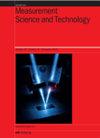卫星激光测距观测任务调度方法研究
IF 3.4
3区 工程技术
Q1 ENGINEERING, MULTIDISCIPLINARY
引用次数: 0
摘要
卫星激光测距(SLR)是目前单次测量卫星径向距离精度最高的技术,正朝着长距离、高精度、自动化方向快速发展。SLR自主观测任务调度是实现台站自动化的重要一步,需要同时满足卫星跟踪优先和观测收益最大化的原则。为了提高单轨车系统的自动化和智能化水平,本文基于蚁群优化算法框架,结合蚁群优化算法的动态优化特性和贪婪算法的局部优化特性,引入最大最小蚁机制,提出了基于贪婪蚁群算法(GACA)的单轨车观测任务调度方案。结果表明,与目前实际应用的调度方法相比,贪婪蚁群算法具有更高的调度效率。结果表明,与目前实际应用的调度方法相比,基于 GACA 算法的单轨铁路系统观测任务计划所获得的观测卫星数量提高了 37.4%,优先级较高的卫星观测总弧段延长了 36.47%,同期总观测增益提高了 42.39%。有效解决了人工调度中观测效率低、观测过程中易漏星、少星的问题,为无人单兵反导系统的建立提供了一种简单实用、高效便捷的观测任务规划方案。本文章由计算机程序翻译,如有差异,请以英文原文为准。
Research on satellite laser ranging observation task scheduling method
Satellite Laser Ranging (SLR) is a technology with the highest precision of single measurement of satellite radial distance, which is developing rapidly in the direction of long-distance, high-precision and automation. SLR autonomous observation task scheduling is an important step in realizing station automation, which needs to satisfy the principles of satellite tracking priority and maximization of observation revenue at the same time. In order to improve the automation and intelligence level of SLR system, based on the framework of ant colony optimization algorithm, this paper combines the dynamic optimization characteristics of ant colony optimization algorithm and the local optimization characteristics of greedy algorithm, introduces the maximum-minimum ant mechanism, and puts forward a scheduling scheme for SLR observation task based on greedy ant colony algorithm (GACA). The results show that compared to the current scheduling methods applied in practice. The results show that compared with the current scheduling method applied in practice, the number of observation satellites obtained from the GACA algorithm-based observation task planning for the SLR system has been improved by 37.4%, the total arc segment of satellite observation with higher priority has been extended by 36.47%, and the total observation gain has been increased by 42.39% in the same period of time. It effectively solves the problems of low efficiency, easy to miss stars and less stars in the observation process in manual scheduling, and provides a simple, practical, efficient and convenient observation task planning scheme for the establishment of an unmanned SLR system.
求助全文
通过发布文献求助,成功后即可免费获取论文全文。
去求助
来源期刊

Measurement Science and Technology
工程技术-工程:综合
CiteScore
4.30
自引率
16.70%
发文量
656
审稿时长
4.9 months
期刊介绍:
Measurement Science and Technology publishes articles on new measurement techniques and associated instrumentation. Papers that describe experiments must represent an advance in measurement science or measurement technique rather than the application of established experimental technique. Bearing in mind the multidisciplinary nature of the journal, authors must provide an introduction to their work that makes clear the novelty, significance, broader relevance of their work in a measurement context and relevance to the readership of Measurement Science and Technology. All submitted articles should contain consideration of the uncertainty, precision and/or accuracy of the measurements presented.
Subject coverage includes the theory, practice and application of measurement in physics, chemistry, engineering and the environmental and life sciences from inception to commercial exploitation. Publications in the journal should emphasize the novelty of reported methods, characterize them and demonstrate their performance using examples or applications.
 求助内容:
求助内容: 应助结果提醒方式:
应助结果提醒方式:


